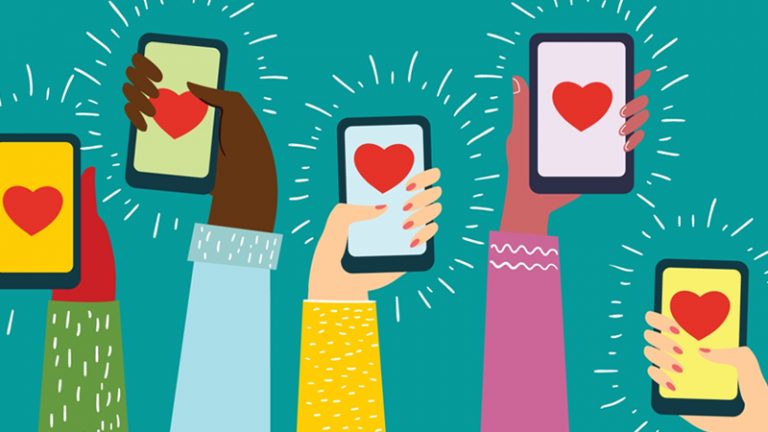
It has become so commonplace to use online dating. Today, there are more platforms than ever to connect with potential romantic partners from the convenience of your smartphone — from heart-breaker platform Tinder and its popular offspring Bumble to more specific sites for specific kinds of people or with niche interests. But not all dating apps are created equal: different platforms have varying features, different demographics of users, and implicit rules that some will suit better than others.
Doublelist is a relatively new player, and it’s an alternative to the mainstream dating apps. With a focus on facilitating casual connections and adult-oriented encounters, it caters to a specific segment of romantically inclined internet users, particularly those seeking arrangements like a discreet hookup for married individuals or others interested in no-strings-attached experiences. But how exactly does Doublelist compare to more traditional online dating platforms?
Defining the Traditional Dating App
When it comes to the concept of traditional dating apps, platforms like Tinder, Bumble, OkCupid, and Match immediately come to mind for most people. These apps share certain key traits that reflect mainstream expectations of online dating:
Focus is on relationships. The ultimate goal emphasized is finding some form of romantic partnership, whether casual or serious. Hookups may occur, but are typically not the apps’ primary focus.
Features facilitate relationship-building. Functionality like detailed profiles, messaging, search filters, and algorithm-based matches lets users get to know potential partners and find compatible people.
Wide, heterogeneous user base. They cast a wide net, appealing to large masses of demographically diverse users seeking relationships. Some niche segments get excluded, though.
Reliance on photos. Pictures are hugely important in profiling yourself and assessing others’ romantic appeal from a visual standpoint. Less focus is placed on written content or personality compatibility.
Socially acceptable use. Using these mainstream apps has become a socially standard way for single people to meet others; little stigma exists around being an active user.
Key Aspects of Doublelist
Contrastingly, Doublelist deviates from the norm in several notable ways:
- Casual encounters are the priority. The platform facilitates casual connections involving sex or other adult-oriented activities rather than formal, committed relationships.
- Features enable discreet communication. Tools like private messaging and image exchanges are intended to enable users to establish and arrange casual meetups rather than truly get to know potential partners.
- Targets specific demographics. Typically appeals more to older users, those in non-monogamous arrangements, LGBTQ+ individuals, or others not served by mainstream apps. Tends to repel long-term relationship seekers.
- Content over images. Profile photos matter, but greater emphasis is placed on written classified ads showcasing what one seeks or offers. Personality compatibility is secondary.
- Considered taboo by some. Due to its focus on enabling sexually-oriented meetups, some segments of society frown upon Doublelist as facilitating hookup culture and infidelity.
As evidenced above, the traditional dating app and Doublelist paradigms differ in their unspoken intentions and target audiences. So what does this mean for the average romantically inclined single person?
Appeal for the Mainstream Dater
For people seeking fulfilling long-term relationships, the traditional dating app model typically serves them best. Apps like Tinder or Hinge are designed to enable you to meet, vet, chat with, and date a multitude of potential partners at ease. Efficient matching algorithms can connect you with highly compatible people you may never encounter organically in the real world. And the large user bases on these mainstream apps increase your odds of finding someone you truly click with emotionally.
Traditional dating apps also appeal due to their familiarity and social acceptance. People feel comfortable navigating the standard features and interfaces of platforms like OkCupid. And openly discussing one’s Match profile or recent Bumble date carries no stigma – it’s considered normal behavior these days for singles. Ultimately, conventional dating apps enable relationship-minded folks to maximize their options without having to veer out of their comfort zones.
The Case for Doublelist
Doublelist caters to a narrower segment of the dating app-using population – its core value lies in facilitating casual adult encounters rather than meaningful connections. As such, it appeals primarily to those seeking:
- No-strings-attached sex. Single or non-monogamous individuals looking for casual hookups thrive on the directness and transparency Doublelist enables. Profile ads convey one’s sexual interests rather than playing the guessing game.
- Discretion. For couples or individuals in committed arrangements seeking something on the side, Doublelist offers more anonymity. Users need not link their profiles to social media or reveal identifying details.
- Specific kinks or fetishes. People wanting to explore less mainstream sexual interests that mainstream apps prohibit have greater freedom to express their desires openly on Doublelist without fear of being banned.
- LGBTQ+ inclusiveness. Doublelist provides an environment free of harassment where LGBTQ+ users can feel safe being upfront about their sexuality or gender identity. Mainstream app spaces are not always similarly welcoming.
For these segments of the dating app-using population, Doublelist simply serves their goals and interests better than more traditional platforms. The focused nature of its tools and user base saves them the time and energy of having to filter extensively to find like-minded matches. And the anonymity granted enables more discreet exploration of one’s sexuality.
Conclusion
If you’re like most typical mainstream single daters, the search for fulfilling long-term romance, then traditional dating apps will be better suited for you. Use the relationship-focused tools and the widespread use of Tinder or Hinge to quickly find chemistry and compatibility.
There are, however, segments of romantically inclined people whose needs focus more on casual adult contacts than formal relationships. If you are looking for an outlet where you can find people who are willing to explore kink, non monogamous couples, or just anyone open with regards to their sex life and requires anonymity, Doublelist should be on your radar. Now remember: no one platform will ever be present to every user. Choose whichever option serves your dating purposes.

